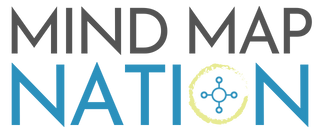MMN Event - External Brain: The Joy of Connected Thinking
Over the past ten years, Lewis Holland, one of our community members have read hundreds of books. Most of all read is now largely forgotten:
Notes in margins lie forgotten, hidden away on the pages of hundreds of books.
Ideas and inspirations are scribbled in notebooks and are ether lost or useless to me without great effort to find and reread them.
This led him to feel overwhelmed and frustrated and robbed of much potential joy in learning and thinking.
Then WHAM! Two years ago, he read (what was then) a rather obscure little book called, How to Take Smart Notes by Niklas Luhmann, and his life was changed. It was a short book about the philosophy of note-making and connected, bottom-up thinking; drawing on the methodology of a little-know German Social Scientist, set his learning and thinking journey on a fuller and more joyful trajectory.
In this event, Lewis shares the benefits of using External Brain systems (EB) to improve our ability to store, synthesize and access the overwhelming amount of information we’re exposed to today. He references the slip box or Zettelkasten method as helpful ways to organize notes and link thoughts, using tools like Obsidian, Logseq, and TwinWiki help keep ideas in order.
If you’d like to watch the event recording, you can register here to access a pool of resources in our community library or check out our membership page for full benefits. Here’s the presentation.
What you’ll learn:
01:07 - Need for EB
08:51 - Niklas Luhmann’s System
09:54 - Bottom-up approach
11:50 - EB analogies
15:23 - EB as legacy
17:27 - Become your own coach
18:30 - How Lewis creates his EB
20:07 - The Zettelkasten
22:38 - Method #1: Fleeting Note
23:19 - Method #2: Atomic Note
25:49 - Method #3: Map of Content
26:43 - Method #4: Graph View
28:44 - Other elements in Lewis’ EB
34:30 - More on the Atomic Note
37:15 - More on Map of Content
44:21 - More on Graph View
47:32 - Benefits of EB
49:49 - Connecting ideas
50:32 - Mind map integration to EB
51:02 - We need friction to learn
52:19 - Solve complexity with basic principles
54:50 - How EB has helped Lewis
Here are some useful Insights:
The need for EB systems as a way to cope with the overwhelming amount of information available today. External Brains (EB) improve the ability to store and access information.
Lewis uses an EB for information curation and learning, utilizing the method of note-taking by Niklas Luhmann.
Lewis explains the nature of EB through analogies, including how it is an environment, a mirror, and a thinking system. They are acts of love to one's future self and can be passed down to future generations.
Lewis discussed the slip box or Zettelkasten method for organizing notes and linking thoughts and sources.
Chris Rodgers finds it interesting that embracing the concept of fleeting notes and turning them into permanent notes allows him to become his own teacher and coach.
EB’s bottom-up approach emphasizes base principles and allows for extensive connections among notes.
Luhmann's system of organizing notes numerically to link thoughts and sources is similar to the concept of a mind map.
Chris and Lewis discuss how Luhmann's system of organizing notes numerically to link thoughts and sources is similar to mind maps. They also mention tools like Obsidian, Logseq, and TwinWiki that can be used to organize and structure notes.
There are four main utilities to building an EB:
Making your ideas immortal by recording and tangibly observing them from different angles
Revealing unexpected relationships between ideas
Incubating ideas over time in a secure way
Using it as a source for creating new work
Make the most of your mind maps
Thanks for reading this article. If you found it useful, you can get a new mind map in your inbox every week. Epiphany is your dose of structured thinking and ordered chaos.

